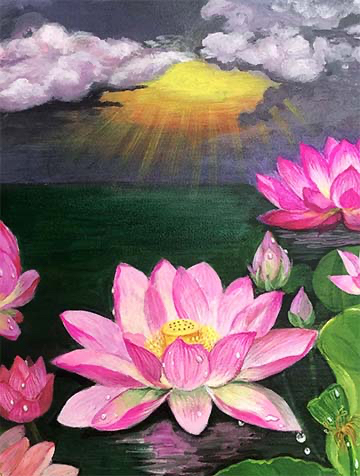When reading the article "China Shows Reporters Forbidden Camp" by JOHN LEICESTER, Associated Press Writer, I recalled the days I was imprisoned at a Chinese detention center in Shenzhen City, Guangdong Province.
It was right before Christmas 1999. I was on vacation in Hong Kong and traveled to the adjacent Mainland China city of Shenzhen. Shortly after I had dinner at a friend's house, who happened to be a Falun Gong practitioner, I was arrested and imprisoned for two weeks before the US government intervened to win my release.
My personal experience at the detention center and the show tour that I read about prompted me to share the following information. After all, how could reporters know all the "secrets" behind the show tour and the long time preparation behind it.
Report: "inmates said they were not tortured and knew of no abuse..."
Alicia: When I was at the Shenzhen Detention Center, inmates told me that sometimes people would come to the detention center to visit the cells. So, the detention center built a model cell; the interior was clean and covered with white porcelain tiles. All the inmates were told to not admit that they were forced to do hard labor or were beaten at the detention center, otherwise, they would be physically punished later and their jail-terms would be lengthened. As a matter of fact, all the shoes the inmates were making were hidden during those peoples visits.
Report: "dressed in blue and white track suits played basketball, a clean dining hall ..."
Alicia: When I was imprisoned, I didn't see anyone playing basketball. All the food and water was sent into each cell via a square hole in the wall which was about 12 inches x 12 inches. That was the very same hole that garbage was pushed out of to the collector. A clean dining hall mentioned in the article seems to me as the facility for the Masanjia staff, not for the inmates.
Also, the food we ate was not of high quality. The leftovers from the guards were considered to be "premier food" and they would be charged at a premier price.
Report: "Falun Gong practitioners sleep in dormitories with perfectly made bunk-beds ..."
Alicia: I was forced to sleep on the cement floor because the cell was overcrowded. The so-called "bed" was a wooden board stretched across the cell room. The board was our work station to make shoes and plastic hair brushes during the day, and at night, over forty inmates crammed onto the board to try and get some sleep.
I am not surprised that Masanjia put on such a show tour for the reporters. At the Shenzhen Detention Center, when there were visitors, the guards would send brand new blankets, toothbrushes, and cups to the model cell, while the filthy blankets would be hidden. The new supplies would be put in perfect order, but they were not for the inmates to use. They were just for the "show." After the visitors left, all the new stuff would be taken away. Every three inmates would have to share one thin filthy blanket again.
Report: "He said 483 female practitioners are in the camp, although reporters saw only about a third that number."
Alicia: This further validates that the small sample of inmates shown to the reporters were selected, and they do not represent those practitioners who were covered with bruises.
An inmate in my cell who was severely wounded from beatings was not allowed to see her father even though he walked for an hour to visit her. Why? The detention center was afraid of letting the outside world know of the beatings.
Report: "inmates who violate camp rules can be placed in solitary confinement 'to make them think about what they have done.'"
Alicia: Su Jing "forgot" to explain what kind of rules were broken. Everyone knows that any practitioners who refuse to renounce Falun Gong will be tortured. Is one's belief a violation of camp rules?
Category: Perspective








